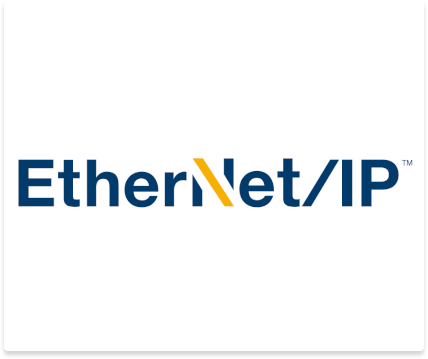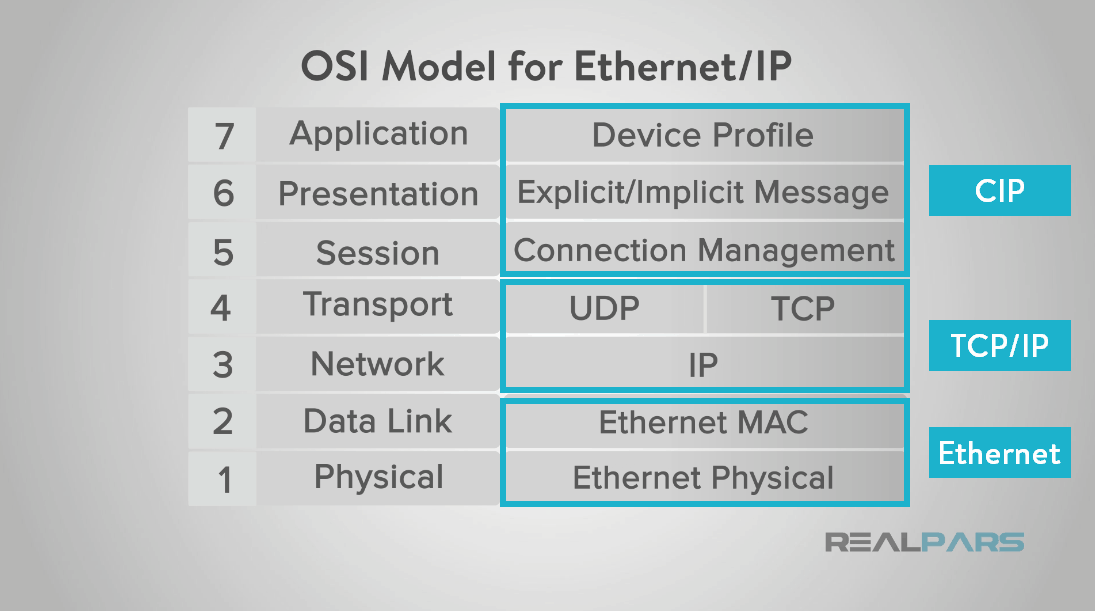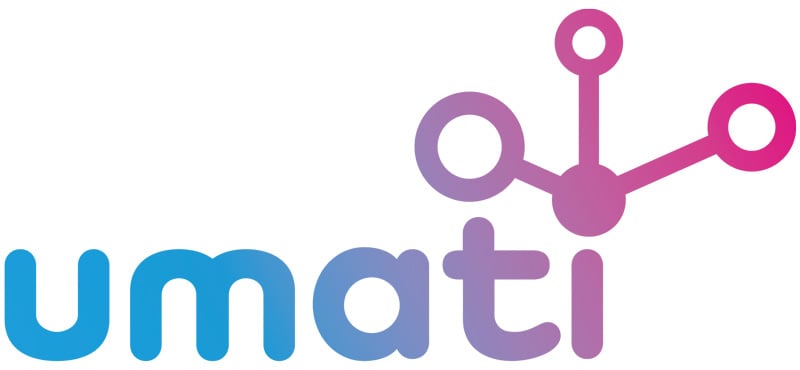Collect Data Using Ethernet/IP
EtherNet/IP is an open-source communication protocol that uses a multi-layer approach to enable industrial automation components. It’s one of many protocols that perform the critical function of enabling layers between devices, applications, and more.

Enabling Industrial Automation with Ethernet/IP
What is EtherNet/IP?
EtherNet/IP is a standard communication protocol used in industrial automation and Internet of Things (IoT) communication. It’s an accepted standard covered under Institute and Electrical Engineers Standards (IEEE) 802.3 with the TCP/IP protocol.
EtherNet/IP’s adherence to IEEE 802.3 compliance standards allows it to robustly handle the physical and data-link layers for EtherNet and wireless communications.
Most manufacturers still utilize legacy assets on the factory floor, including machines, PLCs, nodes, and other equipment. Their old EtherNet layer and chosen topology need to be accessible by the data requirements and traffic generated by a machine data platform. EtherNet/IP enables these platforms across a company’s original topology and infrastructure.
The below image from maps out the components of EtherNet/IP in the OSI Model, a framework that describes the seven layers used by computer systems in order to communicate over a network:
 Image Source: RealPars
Image Source: RealPars
What is EtherNet/IP Used For?
EtherNet/IP is used for communication between connected devices. It enables real-time communication to feed machine data platforms and deliver insights to the user or machine for consumption.
It can be used for many devices, including devices not connected to controllers. Most people visualize EtherNet/IP as a cable or T1 line. But as a communication protocol, it uses a company’s traditional EtherNet infrastructure to enable the use of multiple devices engaged in real-time communication across the factory floor.
These devices include PLCs, controllers, wireless devices, edge computing nodes, IIoT sensors, robotic devices, and more. And while the physical hardware may still be a cable, it also allows wireless communication such as cellular or Bluetooth.
These devices communicate the millions of data points that machines generate on the shop floor. The data is can be sent to a cloud-based machine data platform for processing and analysis. EtherNet/IP makes this real-time data transfer possible.
EtherNet/IP: The Standard Protocol of Industrial Communication
EtherNet/IP uses the IEEE 802.3 standard, which defines the physical and data-link layers of the wired part of the EtherNet.
The IP portion of EtherNet/IP stands for Industrial Protocol; it adapts or converts the Common Industrial Protocol (CIP) for use over EtherNet. CIP standards power the device profiles and services required by real-time applications and controllers.
Because EtherNet/IP converts EtherNet’s existing list of capabilities to an object model used by CIP, it can transport any I/O messages along the network. This process makes it easy to implement automation functions despite manufacturers using a wide range of devices.
How Does EtherNet/IP Integrate into an Industrial IoT Platform?
A connected factory consists of hundreds or thousands of devices that need to send data. The EtherNet/IP protocol uses TCP/IP to manage these devices in an integrated system.TCP/IP is layered protocol that splits data types into multiple layers, including:
- Application or Device Layer: Because machine data platforms utilize multiple devices to retrieve data, the application layer is required to sort through various internet communication models, including HTTP, FTP, IMAP, etc. Once the layer has added relevant identifier data to the packet, it’s passed to the TCP layer.
- TCP Layer: The TCP layer “unpacks” the data, looks for errors or missing elements, and eliminates any redundant information.
- IP Layer: In the IP layer, additional identifiers are added. This ensures that the machine data platform knows how to process the analysis and where to send it.
- Network Layer: The network layer places the data into EtherNet packets for transmission over the internet to the device requesting the information.
These layers enable seamless real-time communication between devices on the shop floor and the cloud-based machine data platform. This connection can be used for automation functions, analysis, alerts, alarms, and more.
The Benefits of Using EtherNet/IP
Device Communication
Because it uses a combination of EtherNet and CIP protocols, EtherNet/IP enables device communication without the need for routers or switches. EtherNet/IP also allows integration throughout the enterprise network. Device control, configuration, and new or revised instructions can be sent from any device with access.
Legacy Systems
EtherNet/IP’s structure allows companies to connect devices from any OEM to the network, thereby enabling access to the machine data platform. This procedure eliminates the need for proprietary protocols that require expensive investment into a single vendor’s product. This approach also optimizes the use of all devices by lowering costs and allowing users to choose the ones that fit their system.
Wide Use
EtherNet/IP is a widely used standard, and users can find devices across a wide range of vendors. This range includes small micro-applications through large-scale industrial systems used for building maintenance.
Topology Options
Many manufacturers are already invested in EtherNet which uses hardware (such as cables) to connect. EtherNet/IP allows users to continue using their star, ring, or daisy chain configuration while allowing them the flexibility to add wireless devices.
Open Source
EtherNet/IP is open source. Suppliers and vendors can design devices to take advantage of EtherNet/IP’s familiarity and use within industrial automation. The software is free to developers and vendors to include in their products.
How Do I Ensure Connectivity to All Equipment?
This is where a connectivity solution like MachineMetrics comes into play. MachineMetrics is a Machine Data Platform that enables connectivity to any make and model of equipment, including legacy machines.
MachineMetrics is the leading platform to collect, monitor, analyze, and drive action with manufacturing equipment data. Our platform easily captures data from your manufacturing equipment and provides a complete toolkit to drive actionable insights for frontline workers and other factory floor systems that improve the efficiency and quality of production.
You can easily connect to, and collect data from all your devices for complete operational visibility.
Want to see the platform in action? Book a Demo Today.



